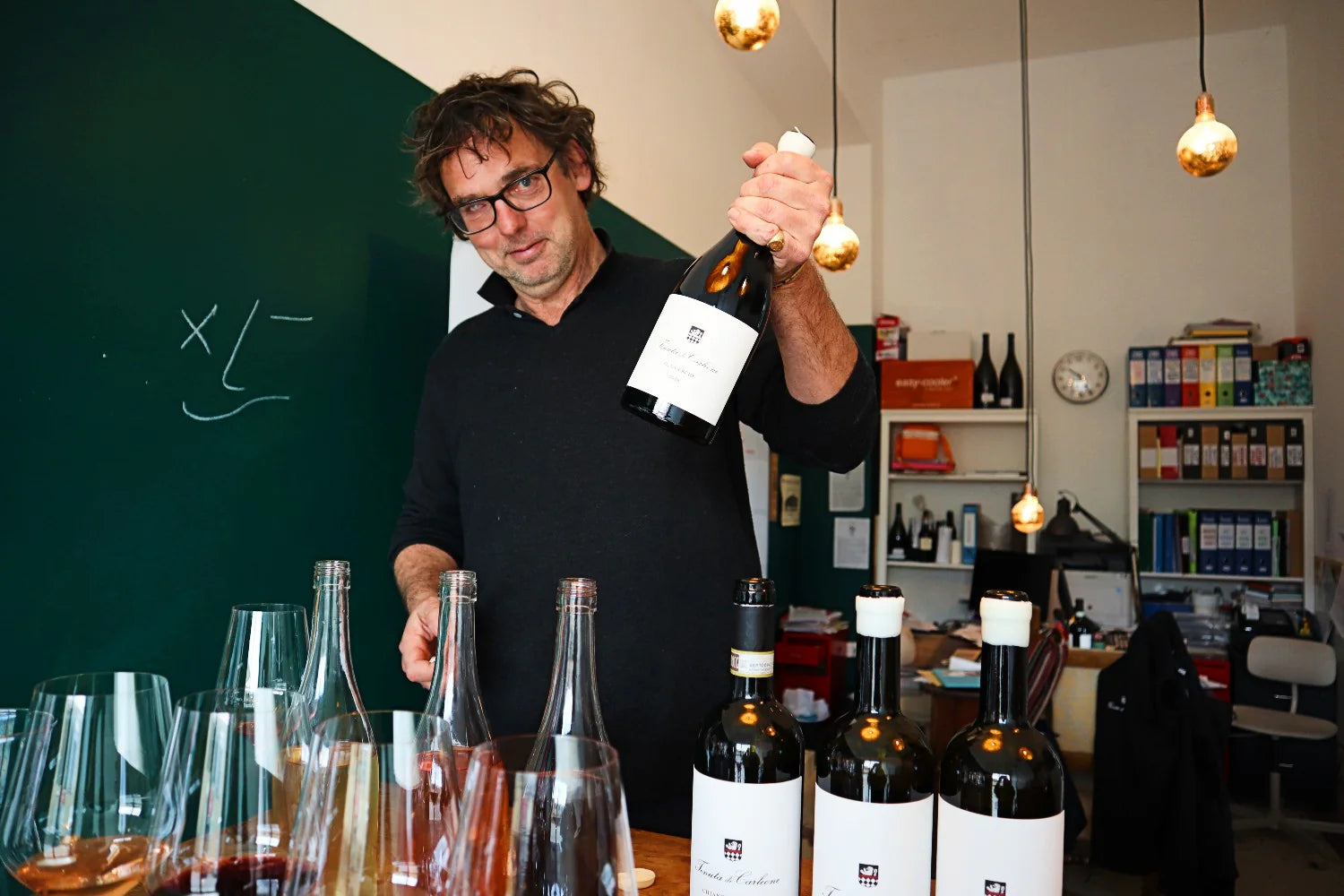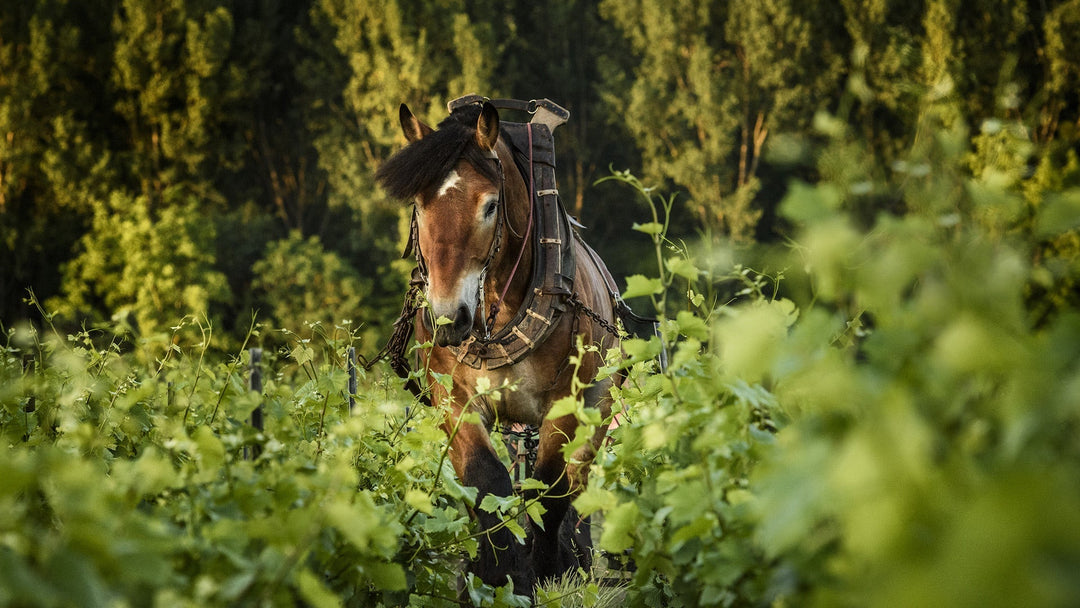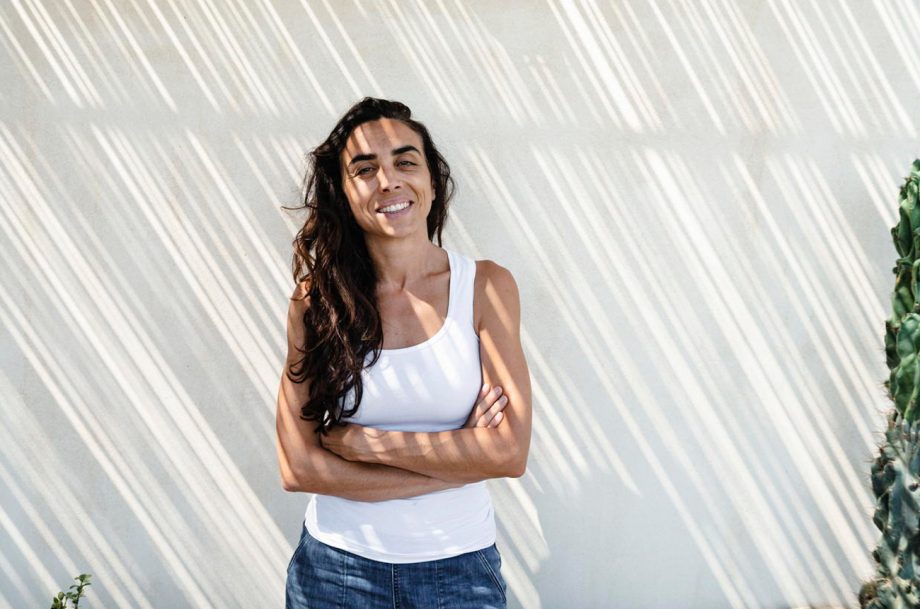TENUTA DI CARLEONE
CARLEONE : A ONE-EYED PERSPECTIVE
It turns out that even after decades of the tumultuous happenings in the region of Chianti, there was still plenty of potential for things to be shaken up even further. This took shape as a couple of expats—Austrian-born Karl Egger and English-born Sean O’Callaghan. Both fell in love with Chianti, their collaboration to form Tenuta Carleone solidifying that love for the area. Going a step further, they poured effort into restoring the ruins of the Castiglioni, a small property with vines, olive groves, wooded hills, rivers, and plains. The property is located in Radda, a famous commune of Chianti Classico located in between Florence and Siena.
When the time came for Karl Egger, whose family owns the Carleone property, to choose a winemaker for his project, the clear choice was Sean O’Callaghan, who built his name in the wine world with the wines of the winery Riecine in the village of Gaiole in Chianti Classico. Karl allowed for him to have full reign of Tenuta di Carleone, a vision that was as clear as could be. Sean, having been born blind in his right eye, is lovingly known as “Il Guercio” by friends, which means “one-eyed rascal.” Sean decided to implement biodynamic farming while also bringing forth his natural tendencies of precise attention to detail. The wines are pure, void of anything that might hinder the true expressions of the wine. “Sangiovese is something that should be really clear,” says Sean; but it wasn’t always this way.
During the 80s and 90s, Chianti went through a renaissance, which began as a serious identity crisis. There was a bureaucratic shift from quality to quantity. Chianti was known as the “straw wine,” relegated to Italian restaurants only, or the easy-drinking plonk-like wine that could be found in large glass jugs at American supermarkets. It was also regulated that Chianti be a blended wine, that Sangiovese is too acidic on its own. Adding the white grape called Malvasia or the less acidic Canaiolo would make the Chianti wine more approachable to just about anyone.
Around the same time, Super Tuscans were becoming all the rage, winemakers were after the preferences of international drinkers, and experimenting with international grape varieties, leaving Chianti wine in the dark. It wasn’t uncommon for a wine like Chianti to be considered too “watery,” acidic, and at times, rustic. Wine critic Robert Parker developed a reputation for giving very high scores to wines that were full bodied with more alcohol, more oak, and just more everything. Many of the world’s drinkers began to think that these traits made for a desirable wine. Fortunately, and ironically, the tables have started to turn!
Chianti is often used as an all-purpose word when describing Tuscan wines, though the word deserves a bit more respect. Here’s a quick lesson.
Tuscany is a region in Italy.
Chianti is a region within Tuscany.
Chianti Classico is an appellation within Chianti.
Radda is a subzone inside Chianti Classico.
Confusing? Well, sure it is. It’s like the Russian nesting dolls if they were wine regions. So why does this all matter? Both Chianti and Chianti Classico have their own wine making laws and make different wines. In the story of Tenuta Carleone, Chianti Classico is where the story takes place.
Sean O’Callaghan recalls the times of the 1990s when the bottling of Pergole Torte by Montevertine was at the forefront of Tuscan wine. “I’m trying to make the Pergole Torte of the ‘90s, but with climate change that’s difficult.”
(Quoted in Noble Rot Issue 25 - Shine To The Vine) Sangiovese continues to be endlessly manipulated, whether in its blending, oak aging, or alcohol levels. Sean O’Callaghan seeks to make wines of elegance and purity over power.
Carleone, as a Chianti Classico producer, has found their way into the same conversation as First Growth Bordeaux. The writers over at the London publication Noble Rot magazine said boldly, “Could this be Tuscany’s answer to Haut Brion?” In short, a tremendous accreditation with the comment being made at Carleone bottling called "Uno". Many consider the wine of Chateau Haut Brion to be the Holy Grail of the wine world. It’s the wine that drinkers lust after, winemakers attempt to emulate, and critics love to review (and will often review the same bottle more than once)?
"Uno" is the flagship bottle of Tenuta Carleone made from the best grapes from all their vineyards. It's just Sangiovese, no blending. This wine spends 18 months between tonneaux barrels (about 10% new), cement, and stainless steel. The purity of the fruit and focus of the tannins makes this wine really shine.
"Il Guercio" is Sangiovese from a single vineyard in the Chianti region without the Chianti designation. The grapes are harvested late due to the high elevation and the wine is aged in cement tanks. This is a standout wine for the region due to its winemaking and rigorous sustainability practices. "Il Guercio" has a elegance to the fruit and a delicacy that is tricky to produce in the region.
“A good Chianti Classico is one of the most soulful wines I know,” says Eric Asimov of New York Times. We couldn’t agree more. Chianti Classico is becoming more and more a wine that’s sought after for its quality, versatility, and drinkability. Thank you to Tenuta Carleone, the wines of this region have earned a well-deserved reputation among the greatest winemakers in the world.








